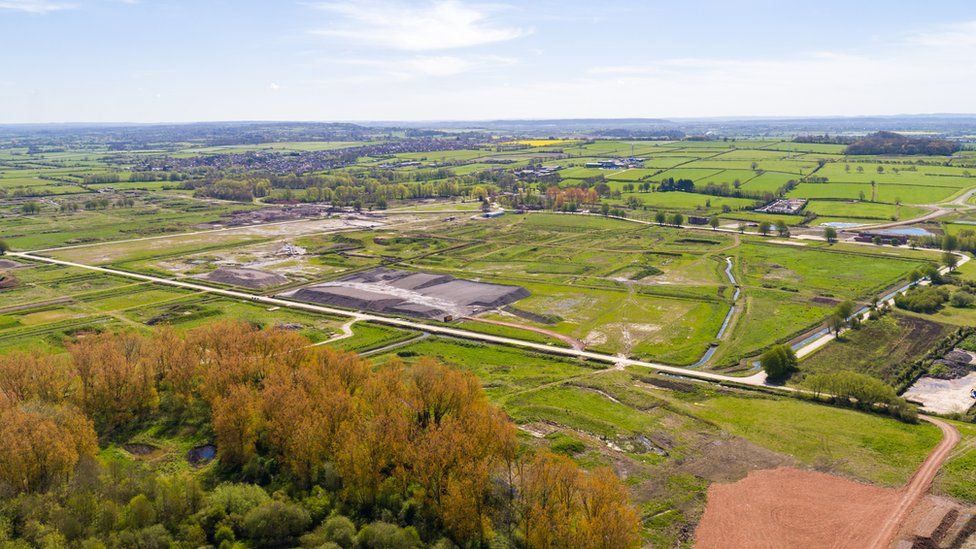By Harry Mottram: back in the 1970s an ex-boyfriend of my sister in law used to work at the Royal Ordnance Factory at Puriton in Somerset, where they made high explosives and ammunitions for the armed forces. Those were the dying days of the factory – spread out over a huge campus with its own road system, facilities, social club and a railway that linked up to the main line from Bristol to Taunton.
Now the partially redundant site is to become the UK’s largest electric vehicle battery manufacturing facility creating some 4,000 jobs and thousands more in the supply chain in the £4bn project. The media, Somerset County Council, the Government and the local Chamber of Commerce have worked themselves up into a fever pitch of excitement over the news but they haven’t mention the small matter of a £500 million sweetner of tax payers’ money offered to Tata to build the site in Somerset. And of course Tata’s finances have been considered somewhat opaque in the past as the Indian based conglomerate has expanded its holdings with a large stake in the UK steel industry. Tata Jaguar Land Rover-owner Tata says it will invest £4bn in the site near the M5 at junction 23 near Bridgwater at Dumball.

The BBC’s Ruth Bradley reported this week: “Agratas – Tata Group’s global battery business – has confirmed it will build the factory, its first outside India, at the Gravity Smart Campus in Puriton. The site was a Royal Ordnance Factory from World War Two until it was decommissioned in 2008. Agratas will be the first occupier on the site, taking around 50% of the land. It said by the early 2030s it will contribute almost half of the projected battery manufacturing capacity required for the UK automotive sector. The factory will produce 40GWh of battery cells annually, enough to supply approximately 500,000 passenger vehicles. Tata says battery production is set to begin there in 2026.
“Agratas – Tata Group’s global battery business – has confirmed it will build the factory, its first outside India, at the Gravity Smart Campus in Puriton. The site was a Royal Ordnance Factory from World War Two until it was decommissioned in 2008. Agratas will be the first occupier on the site, taking around 50% of the land. It said by the early 2030s it will contribute almost half of the projected battery manufacturing capacity required for the UK automotive sector. The factory will produce 40GWh of battery cells annually, enough to supply approximately 500,000 passenger vehicles.”

It all sounds very impressive but the site at Puriton has been flagged up before as a new industrial centre so cynics will wait to see when the first shovels go into the ground to prepare the new factory. They may point to Sunderland where the much heralded BritishVolt factory collapsed into adminstration before a single contractor put on a high vis jacket. That project has now been taken on by Nissan – but many people feel that electric powered cars are not the only future of transport. Hydrogen is touted as a better alternative due to it only producing water as a waste product while those who still drive diesel and petrol powered cars have seen a massive increase in fuel efficiency and lower pollution levels from the 20th century’s greatest workhorse. However In the UK there have been fewer than 300 sales of hydrogen vehicles over 20 years, compared with 1m electric cars, according to the Society of Motor Manufacturers and Traders and all major manufacturers have been investing in e-cars. Critics point to the lack of infrastructure, low mileage range, fire hazards and excessive weight of e-cars. And there are more alternatives ranging from liquid nitrogen powered cars, CNG (Compressed Natural Gas) and LPG (Liquefied Petroleum Gas) conversions, Synthetic and bio fuel – all of which are available now.
And dare we say it but there’s another huge project currently under way just 16 miles down the road at Hinckley Point C that is costing billions of pounds and is years behind schedule with doubts over it ever being completed. It has been described as a job creation project and has allowed the French Government backed EDF along with Chinese cash to dictate infrastructure in much of the county.

Back in 2015 I reported on the news that the former ordnance site was to be turned into an Enterprise Zone – announced in that year by the Chancellor in his Autumn Statement. I was briefed as a reporter by Sedgemoor District Council that the railhead would be reopened to be used to bring in equipment and building materials. That was nine years ago – so we await to see what will happen now since there is considerable work to be done if Tata’s dream is to be realised.

ROF37 Puriton was built in 1939 to supply high explosives for the war effort. The site is thought to be contaminated with chemicals used in the production of the bouncing bomb, ordnance used in the Korean War and the high explosive HMX in the mid-1950s. During the 1960s a plastic rocket propellant was also made there along with TNT a few years later. The factory was privatised in 1985 and became RO Defence and bought by BAE Systems in the 1990s and was closed in 2008.

Axbridge News is edited by Harry Mottram and is published for the interest of himself and fellow residents.
Harry is a freelance journalist. Follow him on Facebook, LinkedIn, Twitter, Instagram, YouTube etc
Email:harryfmottram@gmail.com
Website:www.harrymottram.co.uk


You must be logged in to post a comment.